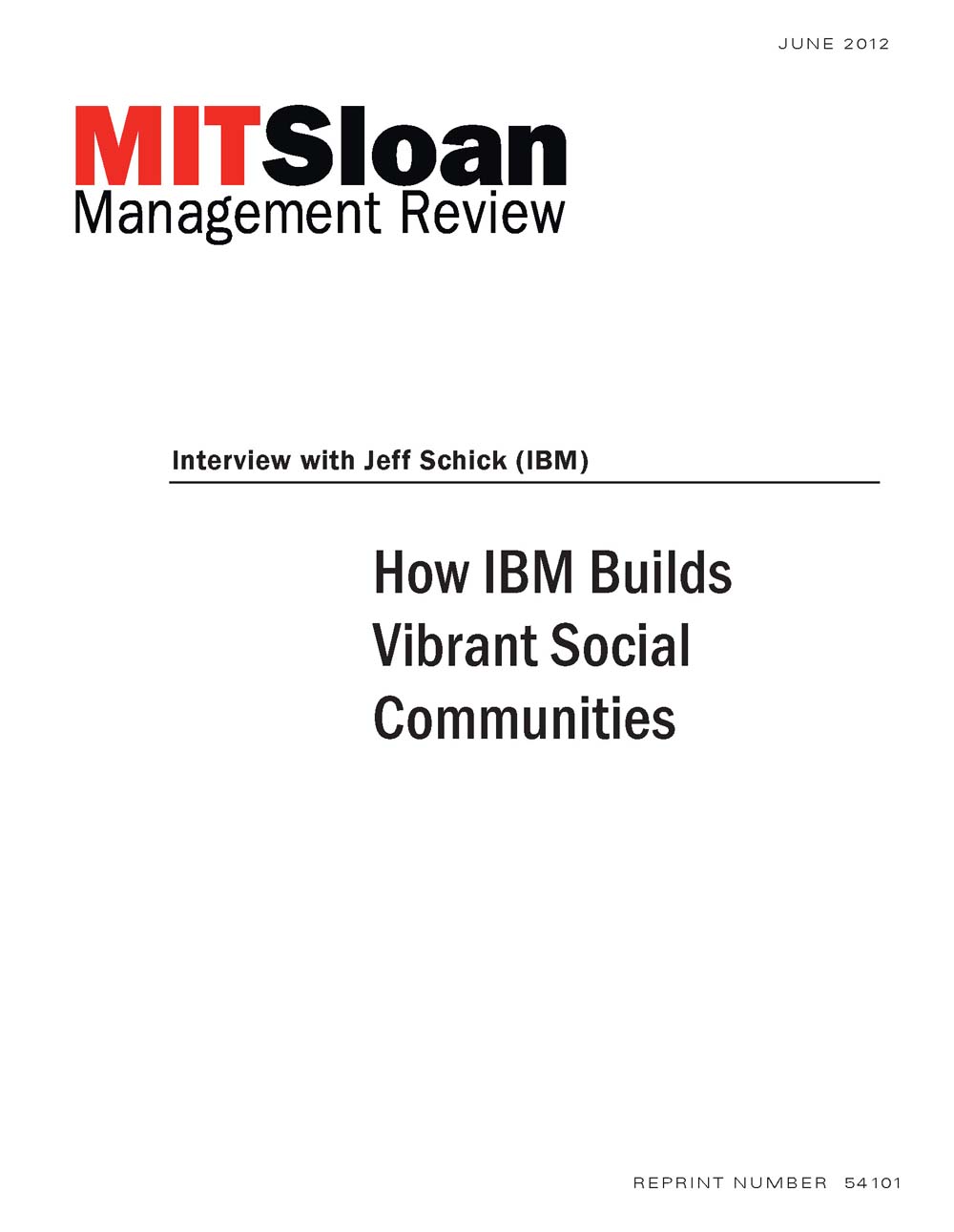Logistics clusters create jobs that are difficult to move offshore and lead to economic growth.
Workplace, Teams, & Culture
Page 24 of 33
-
The Uh-Oh Factor: Fundamental Shifts From Social Business and What To Do About It
Phil Fernandez, President and CEO, Marketo, interviewed by Renee Boucher Ferguson,, Data Analytics researcher and editor at MIT Sloan Management Review. A serial entrepreneur he's taken two marketing-oriented companies public and is looking to do the same with his current endeavor Marketo president and CEO Phil Fernandez knows a thing or two about social business. Marketo utilizes social media, data analytics and Web site traffic to help companies find prospects, interact with them and ultimately, sell to them. His track record to date is impressive. Since Marketo started in 2006, Fernandez and his team have raised $107 in venture capital (yes, in this climate) earned $33 million in subscription revenue in 2011 alone revenue is expected to double that in 2012 -- and signed more than 2,000 customers, including the likes of Intel, LinkedIn, PayPal and McKesson. As a 30-year veteran in Silicon Valley and the author of Revenue Disruption, a book that outlines strategies for companies to transform their sales and marketing organizations to accelerate growth, Fernandez has seen a few shifts in marketing strategies. He believes we're in the midst of another big one. A shift that has many companies, particularly in the business-to-business sector, caught off guard. "We see it playing out over and over and over again, where social is everywhere in B2B, but a lot of people are in denial," says Fernandez. "They're not quite matching up that all those same themes and trends that are affecting them in their consumer lives, are affecting their businesses, too." In a conversation with Renee Boucher Ferguson, a researcher and editor at MIT Sloan Management Review, Fernandez discussed the changing social business landscape and how companies can start to think about and capitalize on those changes.
-
What Managers Really Think About Social Business
How will social networking and social software transform business? See the results of our survey.
-
How to Create Productive Partnerships With Universities
Companies can improve collaborations with universities by giving more thought to relationship structure.
-
How IBM Builds Vibrant Social Communities
Jeff Schick, IBM's vice president of social software explains how IBM is a "social business."
-
How to Become a Sustainable Company
How do companies create the conditions that embed sustainability in strategy and operations?
-
Why Strong Ties Matter More In a Fast-Changing Environment
New research by Marshall Van Alstyne challenges the existing theory about the value of strong ties versus weak ties.
-
Uncommon Sense: How to Turn Distinctive Beliefs Into Action
A company's beliefs are often the most critical source of differentiation.
-
"Do-It-Yourself" Employee Health Care
Motivated by rising health-care costs and commitment to their staff's health and productivity, many companies are taking matters into their own hands.
-
Building a Well-Networked Organization
Leaders and human resources professionals are searching for ways to generate more value from their employees. Recent studies show that companies perform at a higher level when they have integrated talent management programs that are aligned with business strategy and operations. Organizations can get more from their investments in talent management, the authors argue, by focusing on collaboration. Job design and performance management are typically based on individual accountability despite the fact that most work today is collaborative. Talent management practices tend to focus on individual competencies and experiences, while overlooking the importance of employee networks. By examining individual performance data together with the results of organizational network analysis, the authors say, senior managers can look at talent along two important dimensions. In addition to looking at individual employee performance for the purpose of succession or work force planning, they can take a network view to assess the same employees in terms of their broader collaborative contributions to the organization. The authors show how applying a network lens reveals a significant number of key players (including marginalized talent, hidden talent and underutilized talent) that traditional performance management systems miss. They identify best practices for nurturing networks through talent management initiatives, illustrating them with examples from organizations including IDEO, Nokia, Dow Chemical, Best Buy, Gallo and the U.S. Army.












